Recruiting
Thought Leadership
Welcome Center Design Strategy
Creating Transformative First Impressions
In higher education, no space carries more weight than the welcome center. It’s the first physical touchpoint between your institution and prospective students, families, donors, and community members. Yet too many universities treat welcome centers as afterthoughts, generic spaces filled with brochures and monitors displaying rotating campus photos.
At Advent, we’ve spent over 25 years revolutionizing how institutions approach welcome and visitor center design. Through our work with more than 300 clients globally, we’ve learned that exceptional welcome centers don’t just inform visitors, they transform them. They turn casual inquirers into passionate advocates, uncertain prospects into committed students, and skeptical parents into proud supporters.
Our award-winning work at the University of Oregon Student Welcome Center, which earned both the SEGD Merit Award and an American School & University Citation Award, demonstrates how research-driven design can create spaces that truly move people. Creating transformative visitor centers requires more than beautiful design, it demands a strategic approach rooted in deep understanding of your institution’s unique story and your audience’s emotional journey.
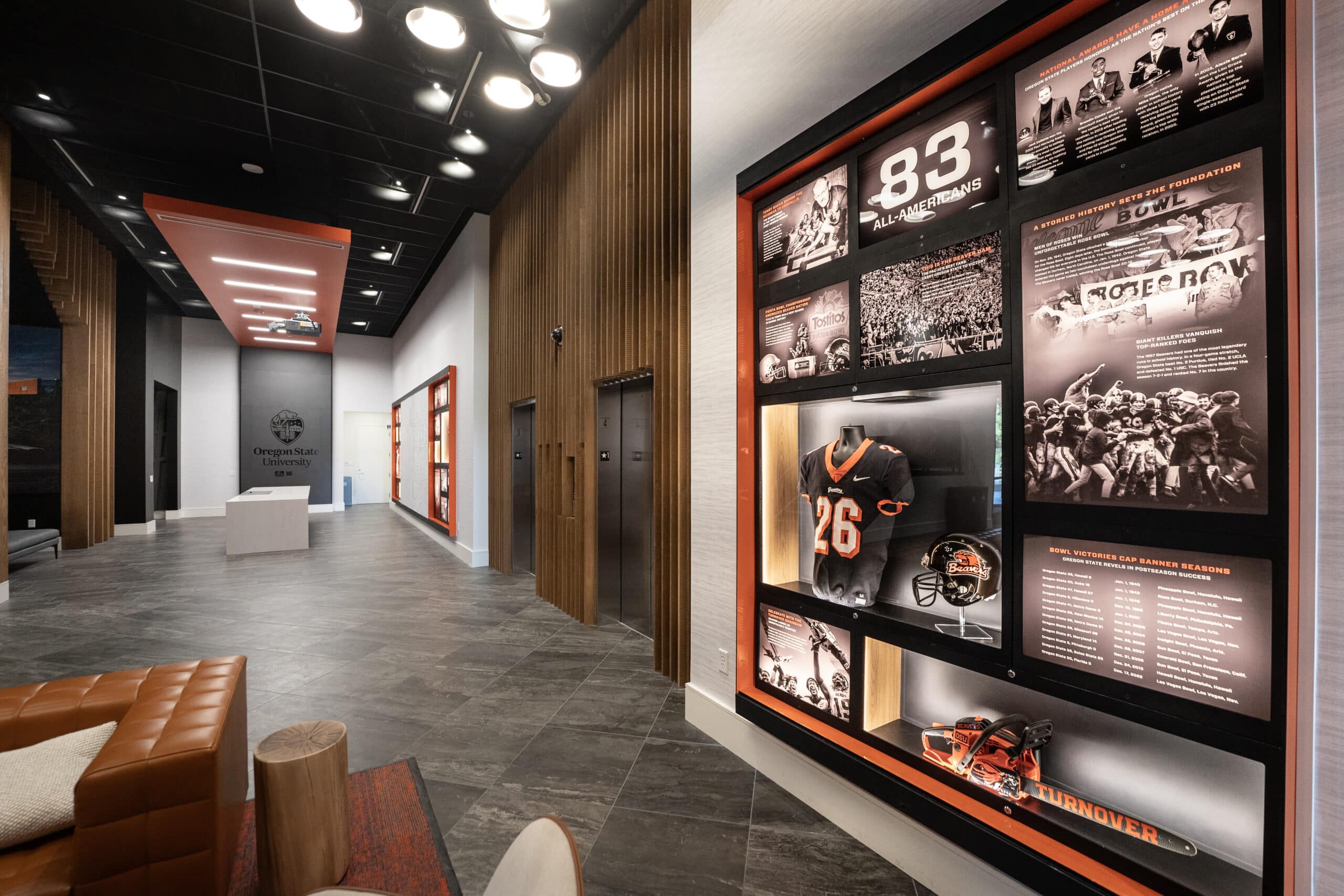
The Strategic Importance of Welcome Centers
Welcome centers have evolved far beyond their traditional role as information hubs. In 2025, they serve as critical conversion tools in an increasingly competitive higher education landscape. Research shows that students now prioritize making an impression when evaluating campus spaces, often citing these student-centered spaces as key factors in choosing what institutions to apply to or enroll in.
The Business Case for Investment
The numbers are compelling. Universities are recognizing that student centers and visitor facilities play a crucial role in attracting and retaining students, fostering a vibrant campus community, and generating revenue through various services and events. When designed strategically, visitor centers become powerful tools for:
- Enrollment conversion: Transforming campus visits into applications and acceptances
- Donor engagement: Creating emotional connections that inspire philanthropic investment
- Brand differentiation: Standing out in a crowded higher education marketplace
- Community building: Fostering connections between prospective and current students
- Revenue generation: Supporting auxiliary services and event hosting
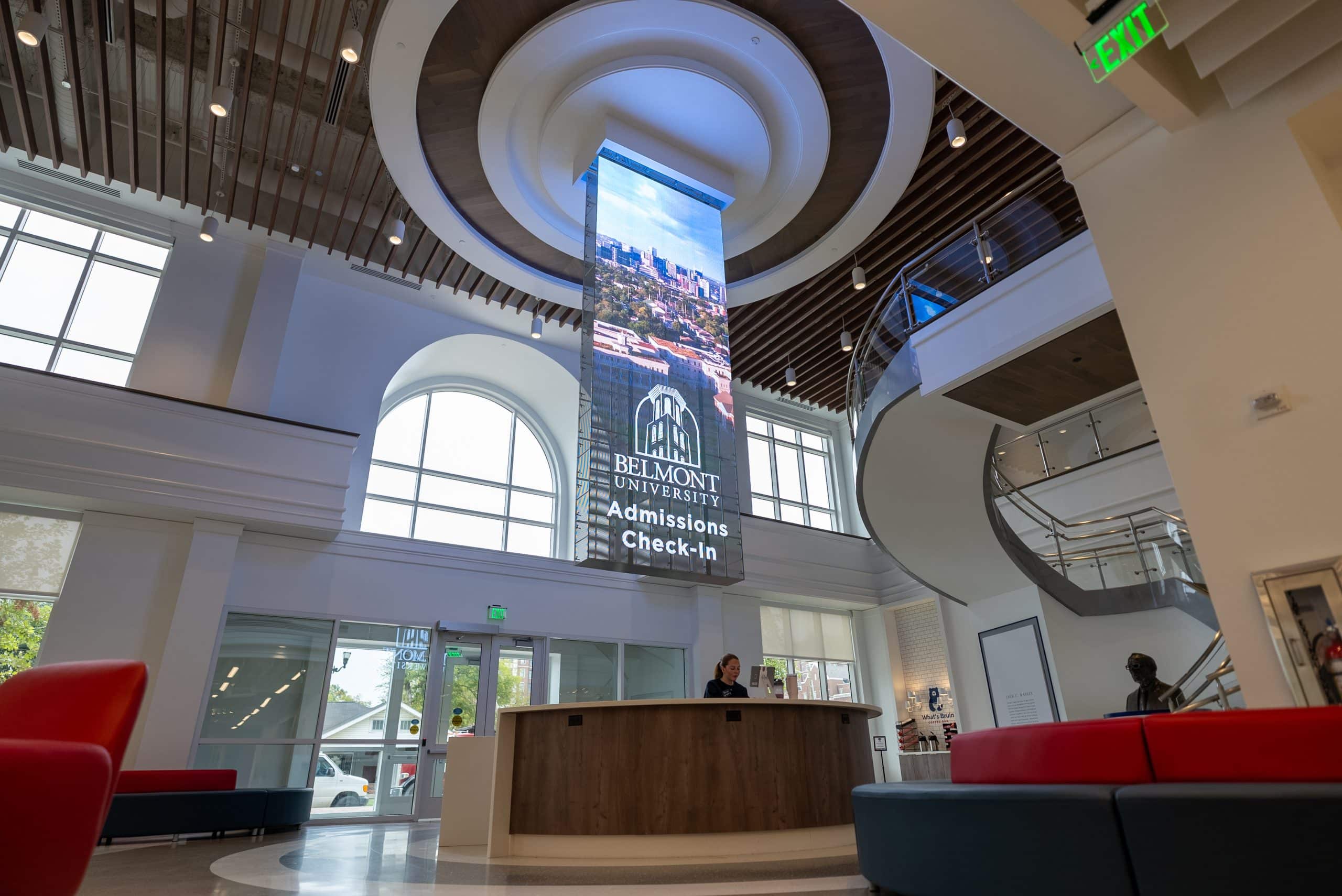
Our methodology for welcome center design is built on the same foundation that guides all our work: StoryMining, research-driven insights, and the belief that authentic storytelling creates the most powerful experiences.
StoryMining: What Makes a Great Welcome Center?
Every successful welcome center project begins with our StoryMining process. We conduct thoughtful, engaging conversations with key stakeholders to uncover the stories, values, and emotional touchpoints that define your institution. For welcome centers, this means understanding:
- The prospective student journey: What brings them to your campus and what will convince them to stay?
- Family dynamics: How do parents, grandparents, siblings, and extended family members experience your institution?
- Institutional differentiators: What makes your university unique and how can space communicate that difference?
- Cultural touchpoints: What symbols, stories, and experiences resonate with your community?
Emotional connections: What moments create lasting impressions and drive decision-making?
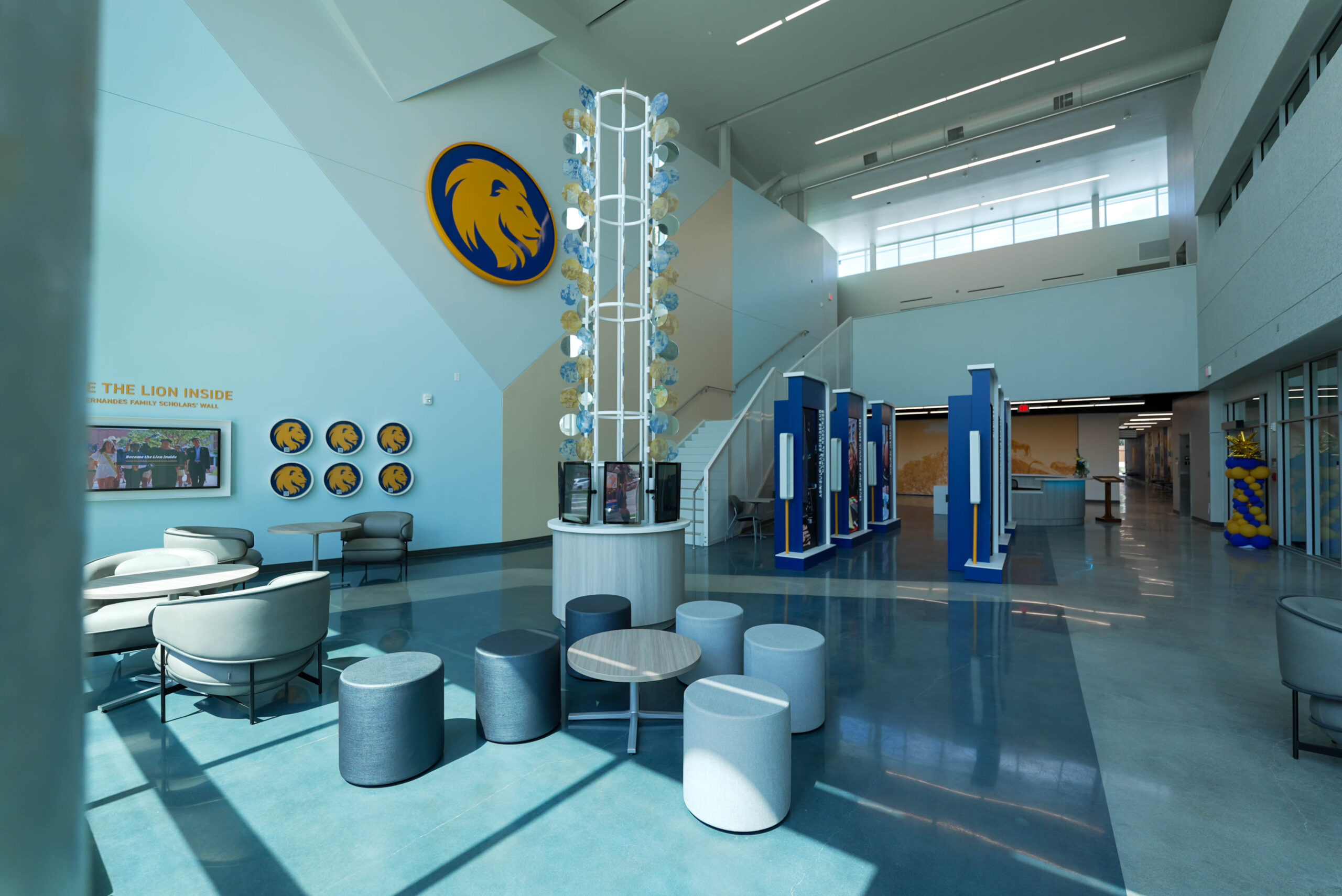
The Advent Approach: Research-Driven Storytelling
Every successful welcome center project begins with our StoryMining process. We conduct thoughtful, engaging conversations with key stakeholders to uncover the stories, values, and emotional touchpoints that define your institution. For welcome centers, this means understanding:
- The prospective student journey: What brings them to your campus and what will convince them to stay?
- Family dynamics: How do parents, grandparents, siblings, and extended family members experience your institution?
- Institutional differentiators: What makes your university unique and how can space communicate that difference?
- Cultural touchpoints: What symbols, stories, and experiences resonate with your community?
- Emotional connections: What moments create lasting impressions and drive decision-making?

Case Study: University of Oregon Student Welcome Center
Our work at the University of Oregon demonstrates how StoryMining creates award-winning results. Through digital storytelling experiences and interactive elements, we created spaces that invite exploration: open a locker in the gear display or pull a book off the shelf, and you never know what you’ll uncover. That’s the story of the UO experience. An illuminating moment can happen anywhere.
The project objectives were clear:
- Create an experience that drives choice for prospective students and parents
- Encapsulate the boldness and strength of the UO brand
- Create surprising and high-touch moments throughout the welcome center
Our solutions included:
- An “enchanted book” featuring page-by-page digital projections
- Filled lockers with campus artifacts to show the breadth of the UO experience
- An interactive library highlighting faculty and alumni
- Integration of the UO brand voice in stories highlighting inclusive, extraordinary, progressive, and irreverent themes
- “Easter egg” content throughout the experience that rewards visitor curiosity
The result was recognition from the Society for Experiential Graphic Design (SEGD), which described our work as meeting “the standard of excellence for experiential design, honoring work that connects people to place by imbuing spaces with context, storytelling, and meaning”.
Case Study: Belmont University Jack C. Massey Center
Belmont University’s Jack C. Massey Welcome Center—known as the university’s “New Front Porch”—serves as both a welcome center and visitor center for prospective students, families, alumni, and the broader Belmont community. Unlike many campus welcome centers, the space is also energized by current students who use it daily, making the environment vibrant, authentic, and alive with Belmont spirit.
Guests can scan a QR code to bring the projection-mapped Bruin statue to life, explore Belmont’s programs and clubs on the interactive touch table, or discover artifacts woven throughout the space. Every detail is designed to spark curiosity, create memorable first impressions, and showcase why Belmont is a destination of choice.
Project Objectives
- Create a visitor center experience that drives choice for prospective students and families.
- Showcase the boldness, creativity, and strength of the Belmont brand.
- Deliver surprising, high-touch storytelling moments throughout the welcome center.
- Design a space that feels energized and authentic by inviting current student use.
Our Solutions
- A projection-mapped Bruin statue activated by QR code.
- An interactive touch table for exploring academic programs, student life, and clubs.
- Storytelling elements and artifacts that highlight Belmont’s mission and community.
- Flexible, student-friendly spaces that keep the center vibrant and active.
The Jack C. Massey Center is a powerful example of how donor recognition can both honor legacy and elevate the campus experience. For the Massey family, this was more than putting a name on a building—it was creating a legacy project that serves as a vibrant gathering place at the heart of Belmont, celebrating the vision and impact of legendary entrepreneur Jack C. Massey.
Key Design Trends Shaping Welcome Centers in 2025
The welcome center landscape is rapidly evolving, driven by changing student expectations and technological possibilities. Here are the key trends we’re seeing:
1. Flexibility and Modularity
Movable walls and reconfigurable furniture are critical for adapting spaces to diverse uses, such as breakout sessions or large events. Modular designs enable easy customization, catering to evolving student needs. Welcome centers need to serve multiple functions throughout the day, admissions presentations in the morning, donor events in the evening, and impromptu student gatherings in between.
2. Technology Integration
Making campus spaces feel state-of-the-art with the latest gadgets and trends in interior design is essential. Adjustable lighting, wireless chargers, temperature control sensors, moveable outlets, smart boards, and more can help boost productivity. However, technology should enhance the story, not overshadow it.
3. Wellness and Biophilic Design
Wellness spaces are becoming increasingly important in student centers. We are seeing more wellness areas incorporated to enhance the overall well-being of students, including elements like meditation rooms, yoga studios, and design aspects like natural lighting and ventilation.
4. Inclusive and Accessible Design
Your campus space cannot be welcoming to all students if it’s not inclusive and accessible. Spaces could feel more inclusive by featuring multicultural centers in prominent locations. Making the space accessible should go well beyond installing wheelchair ramps.
5. Community Connection
Campus facilities serve students and provide opportunities to build bridges with the surrounding community. Whether through shared-use agreements, community programming, or strategic partnerships, institutions can leverage their spaces to foster stronger external connections.
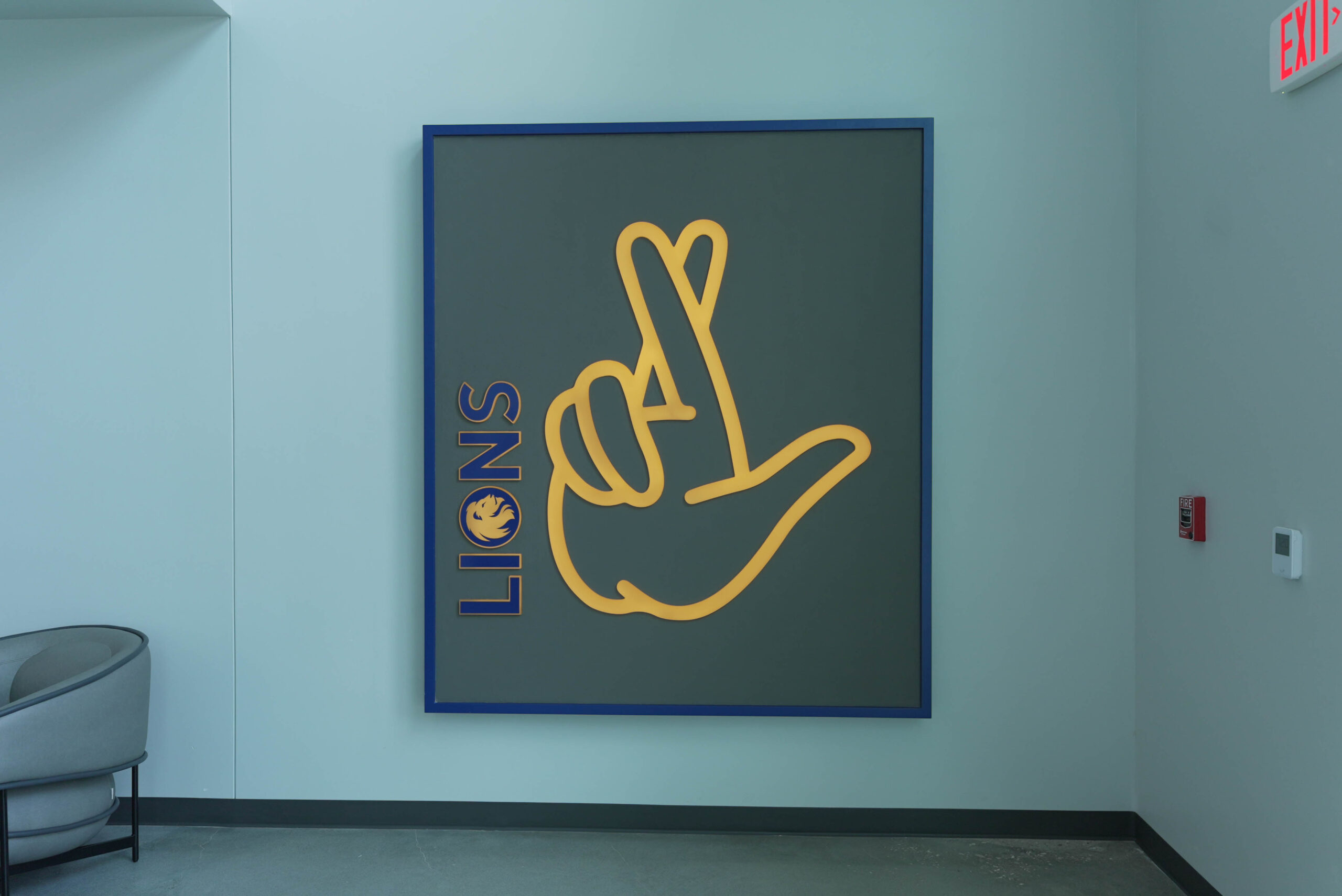
Essential Elements of Transformative Welcome Centers
Based on our research and experience, exceptional welcome centers incorporate these critical elements:
1. Storytelling Architecture
Every surface, every interaction, every moment should contribute to your institution’s narrative. This isn’t about plastering walls with mission statements—it’s about creating spaces where your values come alive through experience.
2. Multi-Sensory Engagement
Students desire spaces that can be sources of pride and impromptu gathering, as well as places to attend social and cultural events. Welcome centers should engage visitors through sight, sound, touch, and even smell and taste when appropriate.
3. Flexible Social Spaces
Social areas should be dynamic and versatile, featuring a mix of seating options such as couches, bar stools, and intimate nooks. This variety fosters a welcoming atmosphere conducive to both group interactions and individual relaxation.
When designed intentionally, these areas also attract current students who use the space to study, hang out, or recharge between classes. Their presence brings energy and authenticity to the welcome center, giving prospective students and their families a genuine glimpse of campus life in action.
4. Interactive Discovery Zones
Create spaces where visitors can explore your institution’s offerings through hands-on interaction. This might include virtual reality experiences, interactive displays, or physical artifacts that tell your story.
5. Quiet Reflection Areas
Providing designated quiet rooms is essential, offering visitors a sanctuary from the bustling campus environment. These rooms should be equipped with comfortable seating, ample lighting, fast Wi-Fi, and charging stations.
6. Event-Ready Flexibility
Welcome centers need to seamlessly transition from intimate family tours to large prospective student events to donor receptions. Design with adaptability in mind.

Appealing Across Generations
A transformative welcome center doesn’t just speak to prospective students—it resonates with the entire family. Increasingly, campus visits include three generations: students, parents, and grandparents. Each arrives with different priorities:
- Students want energy, pride, and belonging. They look for modern, social, and “shareable” spaces that feel like home.
- Parents seek reassurance. They value safety, career preparation, and an environment that demonstrates strong academic and community support.
- Grandparents bring legacy and tradition. They often connect emotionally to history, philanthropy, and the long-term impact of education on their family.
By designing experiences that address all three perspectives, welcome centers become intergenerational bridges—simultaneously inspiring the student, assuring the parent, and honoring the grandparent. This holistic approach ensures your story resonates with every decision-maker who influences enrollment.
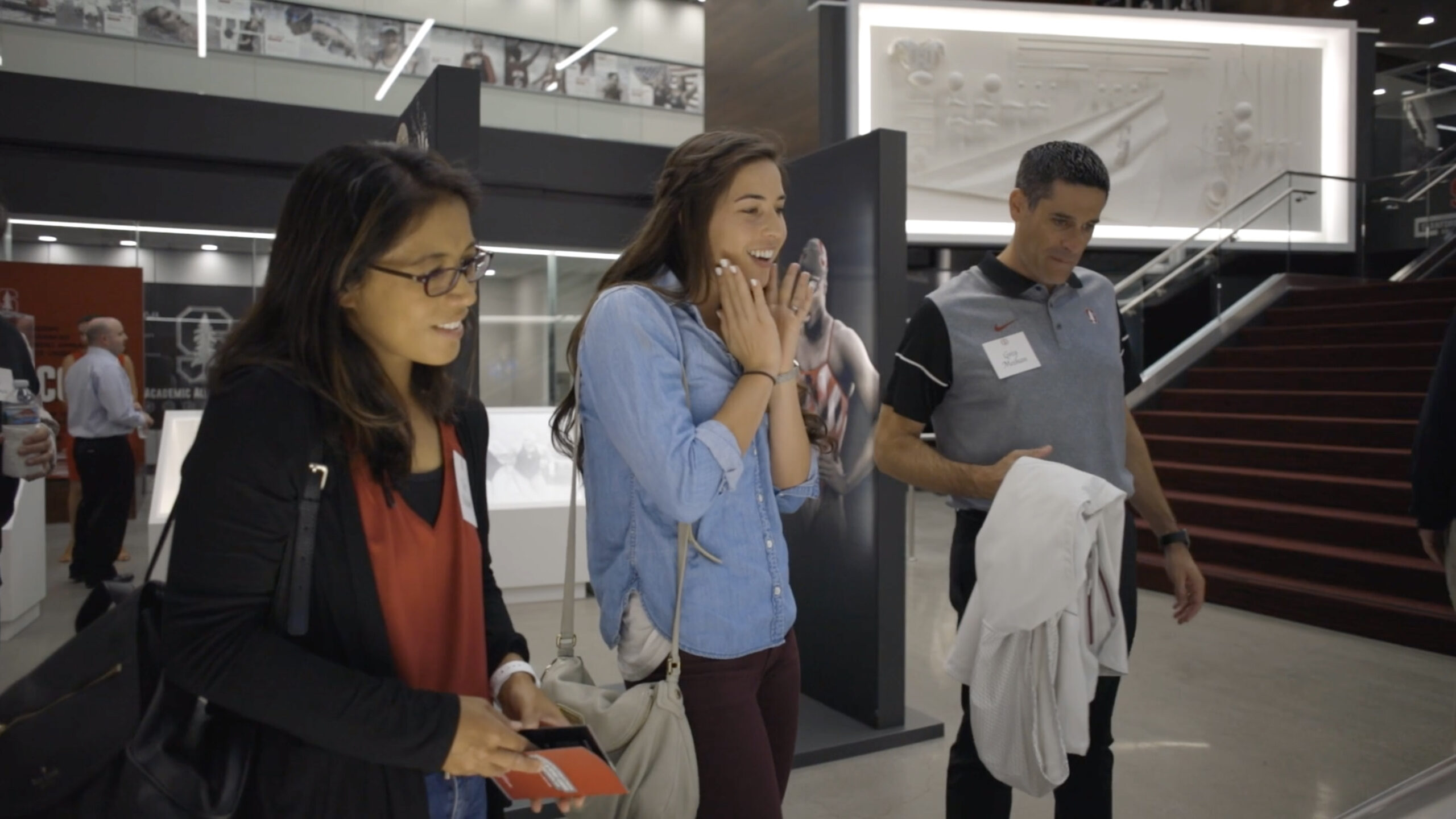
The Research Foundation
Our commitment to research extends beyond individual projects. We’ve commissioned studies on how physical spaces influence decision-making, including research on “athletiscape” – understanding why student-athletes make their college decisions. We partnered with Samford University’s Center for Sports Analytics to study over 1,700 student-athletes to understand the role that physical spaces play in their decision-making process.
This research-driven approach ensures that sponsor activations are grounded in real behavioral insights rather than assumptions. We don’t just talk about research – it’s the foundation of everything we do.
Overcoming Common Welcome Center Challenges
Challenge 1: Limited Space
Many institutions struggle with spatial constraints. Our solution: vertical storytelling and multi-functional design. Every square foot should serve multiple purposes while contributing to your narrative.
Challenge 2: Budget Constraints
Not every institution can invest millions in welcome center design. Our approach: phased implementation that prioritizes high-impact, low-cost storytelling elements first, with technology and infrastructure following as budget allows.
Challenge 3: Competing Stakeholder Visions
Different departments often have conflicting ideas about welcome center priorities. Our StoryMining process aligns stakeholders around shared institutional values before design begins.
Challenge 4: Maintenance and Updates
Static displays quickly become outdated. We design with adaptability in mind, creating systems that can evolve as your institution grows and changes.
Challenge 5: Measuring Impact
Traditional metrics don’t capture the full value of transformative design. We help institutions develop comprehensive measurement frameworks that track everything from conversion rates to emotional engagement.

The Future of Welcome Center Design
Looking ahead, we see several emerging trends that will shape welcome center design:
Digital Integration
From predictive maintenance for campus infrastructure to AI-powered student services, institutions are exploring innovative ideas for college campuses that elevate both learning outcomes and operational performance. Welcome centers will increasingly incorporate AI-powered personalization and real-time data integration.
Sustainability Focus
Sustainability is a growing focus in campus design trends 2025. Universities are aiming to reduce their environmental footprint through the use of eco-friendly materials, energy-efficient systems and the incorporation of green spaces that promote wellness and sustainability.
Virtual and Hybrid Experiences
Post-pandemic, welcome centers must serve both physical and virtual visitors, creating seamless experiences across digital and physical touchpoints.
Community Integration
Universities have already taken and will continue to take greater steps to become resources to their home cities and regions. University facilities have the capacity to serve both populations and creative campus planning maximizes the use of space for many different purposes throughout the day.

Key Success Factors
1. Research-Driven Foundation
Following our methodology, successful sponsor activations begin with comprehensive research. This isn’t just market research, but deep story discovery that uncovers the emotional connections and cultural touchpoints that will resonate with audiences.
2. Stakeholder Alignment
Our StoryMining process ensures that all key players in your organization agree on the foundation of the activation. This alignment is crucial for creating coherent, authentic experiences that don’t feel forced or artificial.
3. Audience Understanding
To create impactful sports sponsorship activation campaigns, it is essential to understand your target audience. Conduct market research to gain insights into their preferences, interests, and behaviors.
4. Authentic Narrative Alignment
The most successful activations are those where the brand’s values and messaging authentically align with the sport, team, or event being sponsored.
5. Creative Differentiation
Our philosophy of creating “something different every time” applies directly to sponsor activations. The goal is not to follow templates but to create unique experiences that stand out in a crowded marketplace.
6. Adaptive Design
Brands need to think beyond traditional advertising to create unique, memorable experiences that capture attention and drive engagement.
7. Multi-Platform Integration
Successful activations seamlessly integrate across digital and physical touchpoints, creating a cohesive brand experience regardless of where fans encounter the brand.
Implementation Strategy
Successfully implementing a transformative welcome center requires a strategic approach:
Phase 1: Discovery and Alignment
- Conduct comprehensive StoryMining with all stakeholders
- Research audience expectations and competitor landscape
- Develop shared vision and success metrics
- Create preliminary space programming
Phase 2: Concept Development
- Design initial concepts based on StoryMining insights
- Prototype key interactive elements
- Test concepts with target audiences
- Refine design based on feedback
Phase 3: Detailed Design and Planning
- Develop comprehensive design documentation
- Coordinate with architects and contractors
- Plan technology integration and content development
- Prepare staff training and operational procedures
Phase 4: Implementation and Launch
- Execute construction and installation
- Develop and test all content and technology
- Train staff and conduct soft opening
- Launch with comprehensive evaluation framework
Phase 5: Evaluation and Evolution
- Monitor key performance indicators
- Gather visitor feedback and staff insights
- Plan regular content updates and space refreshes
- Document lessons learned for future projects

Measuring Success
Effective welcome centers deliver measurable results:
Quantitative Metrics
- Visitor engagement time and flow patterns
- Conversion rates from visit to application
- Net Promoter Scores from visitors
- Social media engagement and shares
- Event hosting revenue and capacity utilization
Qualitative Indicators
- Visitor feedback and testimonials
- Staff satisfaction and confidence
- Brand perception studies
- Stakeholder alignment and pride
- Awards and recognition from industry peers
Conclusion
Welcome center design is far more than an aesthetic exercise, it’s a strategic investment in your institution’s future. In an era when higher education institutions must become entirely new institutions rather than staking their futures on tweaks at the edges, welcome centers offer a unique opportunity to demonstrate transformation and innovation.
At Advent, we believe that exceptional welcome centers don’t just welcome visitors, they inspire them. Through our research-driven StoryMining process and commitment to authentic storytelling, we create spaces that transform casual inquirers into passionate advocates.
The institutions that will thrive in the coming decade are those that understand the power of transformative first impressions. They recognize that welcome centers are not amenities. Instead we see them as strategic tools for enrollment, engagement, and institutional advancement.
As we look toward the future, we see welcome centers evolving into community hubs that serve not just prospective students but entire regions. They’ll incorporate cutting-edge technology while maintaining the human connections that make higher education meaningful. Most importantly, they’ll continue to serve their fundamental purpose: making people feel that they belong.
The question isn’t whether your institution needs a transformative welcome center, it’s whether you’re ready to create an experience that truly moves people? Because in higher education, as in life, you never get a second chance to make a first impression. Make yours count.
Ready to transform your welcome center? Our team stands ready to help you uncover your institution’s unique story and create experiences that move people. Contact us to begin your StoryMining journey.
Interested in Learning More?

Grace Johnson
Client Engagement Manager | Former University of Kentucky Visitor Center Director